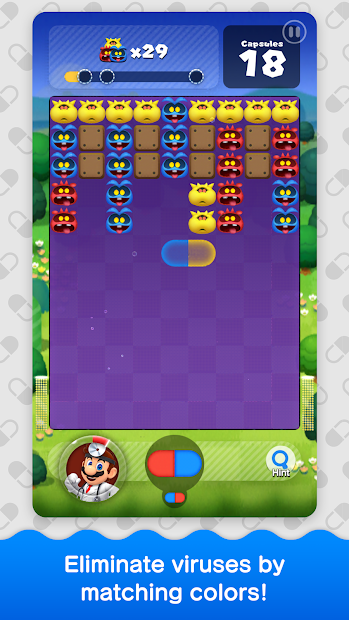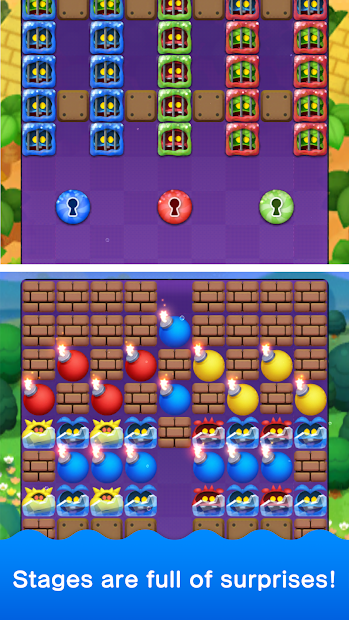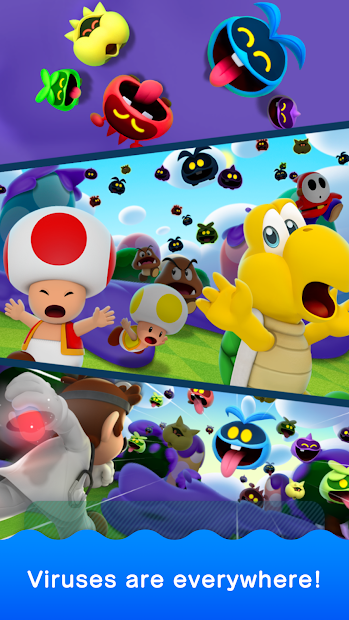- Wondering how to get Monopoly GO! free rolls? Well, you’ve come to the right place. In this guide, we provide you with a bunch of tips and tricks to get some free rolls for the hit new mobile game. We’ll …
Best Roblox Horror Games to Play Right Now – Updated Weekly
By Adele Wilson
Our Best Roblox Horror Games guide features the scariest and most creative experiences to play right now on the platform!The BEST Roblox Games of The Week – Games You Need To Play!
By Sho Roberts
Our feature shares our pick for the Best Roblox Games of the week! With our feature, we guarantee you'll find something new to play!All Grades in Type Soul – Each Race Explained
By Adele Wilson
Our All Grades in Type Soul guide lists every grade in the game for all races, including how to increase your grade quickly!
Dr. Mario World Review: An Uninspiring Puzzler From Nintendo That’s Infested With Predatory IAPs
There are two reasons we’re surprised that Dr. Mario World is a Nintendo offering: the infestation of predatory IAPs feels so jarring coming from the family-friendly creator of Mario and, perhaps more surprisingly, it just all feels so uninspired. Make …

There are two reasons we’re surprised that Dr. Mario World is a Nintendo offering: the infestation of predatory IAPs feels so jarring coming from the family-friendly creator of Mario and, perhaps more surprisingly, it just all feels so uninspired.
Make no mistake: this is exactly the sort of dull match three experience we expect to see on mobile. If King had put this out, we wouldn’t have been surprised at all. It’s solid, it’s pretty, and it chucks new features at you regularly enough to keep you mildly interested.
But this is a Nintendo game. Sure, the big N’s offerings on mobile have paled in comparison to its console offerings but Super Mario Run, Fire Emblem Heroes, and even, to a certain extent, Animal Crossing Pocket Camp have featured a level of spark and creativity that’s generally absent from a AAA effort on mobile.
But Dr. Mario World brings us crashing right back to earth. This is a typical mobile puzzler experience complete with that’s entirely designed around an artificial level of difficulty that slowly encourages you to spend your cash.
Dr. Mario World is Nintendo’s Latest Mobile Release
You play as Dr. Mario, Dr. Bowser, or Dr. Peach, depending on your choice, and have to work your way through a series of levels that involve destroying viruses. Each level plays a bit like Tetris, Puyo Puyo, or a bubble shooter. You’ll see a bunch of coloured viruses on the screen, and your goal is to destroy them.
To do so, you have to match them with a pill of the same colour. Much like a bubble shooter, you’ll get a series of coloured pills in a random sequence, and you can place these anywhere on the board. Match a same coloured pill with at least two stacked viruses, and you’ll eliminate them.
Burst all of the viruses and you successfully complete the level. While this is easy enough at first – you’ll only have to contend with one or two different coloured viruses – it quickly ramps up in difficulty, with numerous different viruses to contend with.
Fortunately, you have a few aces up your sleeve. The most notable of these are multicoloured pills, which let you destroy multiple viruses in one fell swoop. Match half the pill with a couple of same coloured viruses and you’ll retain the different coloured half. Not only that, but you can move the other half around the level as soon as the virus is destroyed, allowing you to take out multiple groups of viruses at once.
It Challenges You to Save the Mushroom Kingdom From a Viral Outbreak
Then you have the typical boosters, which you can trigger before and during a level, depending on the booster. Some of these are great – like the shells and bombs that occasionally litter the levels – but others are just there to give you an excuse to spend money.
There are four boosters you can use before you go into a level, as well as three you can use within. Out of seven possible boosters, you can only get two using free coins you earn as playing – and they’re extortionately expensive. The remaining five cost diamonds, which you can only earn by spending cash.
Not only that, but unlocking new assistant characters – which provide you with statistical bonuses – requires you to purchase a loot box, which costs an insane number of coins or 40 diamonds. 40 diamonds currently costs around $5, which is an insanely high price for a single loot box.
Sure, you don’t need boosters or assistant characters to get through the game if you’re good, but remember that Nintendo games are generally aimed at children, and the aesthetics of Dr. Mario World don’t suggest otherwise. When a single booster – which doesn’t even guarantee that you’ll complete the level – costs a dollar, how can you describe that as anything other than predatory?
We’re Surprised at the Number of Predatory IAPs Present in a Nintendo Release
And this is Nintendo we’re talking about. We’d expect this sort of morally bankrupt behaviour from the vast majority of mobile developers and publishers that are out to make a quick buck, but not from Nintendo.
But as bad as that is alone, our biggest disappointment is down to the gameplay itself, which is so bog standard and dull that we already feel like we’ve seen enough on day one. That’s the most damning indictment of all.

The good
- Gorgeous visuals

The bad
- Predatory IAPs
- Artificial difficulty
- Uninspired gameplay
Glen Fox
Head of Editorial
More articles...
Monopoly GO! Free Rolls – Links For Free Dice
By Glen Fox
Wondering how to get Monopoly GO! free rolls? Well, you’ve come to the right place. In this guide, we provide you with a bunch of tips and tricks to get some free rolls for the hit new mobile game. We’ll …Best Roblox Horror Games to Play Right Now – Updated Weekly
By Adele Wilson
Our Best Roblox Horror Games guide features the scariest and most creative experiences to play right now on the platform!The BEST Roblox Games of The Week – Games You Need To Play!
By Sho Roberts
Our feature shares our pick for the Best Roblox Games of the week! With our feature, we guarantee you'll find something new to play!All Grades in Type Soul – Each Race Explained
By Adele Wilson
Our All Grades in Type Soul guide lists every grade in the game for all races, including how to increase your grade quickly!













